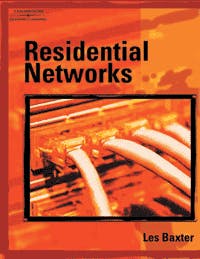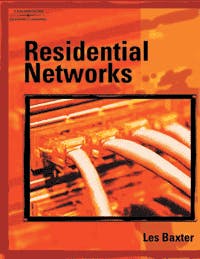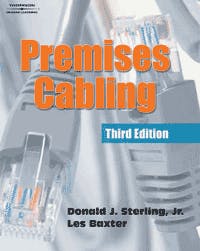Targeting a broad audience ranging from cabling professionals to technical college students, two books recently written by cabling consultant Les Baxter aim to provide a basic overview of installation methods and issues while also giving the reader the option to dive into meatier design and technical details.
Baxter has been a prolific author of technical and trade publication articles, a speaker at industry conferences, and has recently served as secretary of the IEEE P1294c Working Group participating in the definition of Augmented Category 6 specifications in the TIA TR-42.7 committee.
The third edition of Premises Cabling (co-written with technical writer Donald J. Sterling Jr.) and Residential Networks-both published by Thomson/Delmar Learning-serve as handy references for installers as well as building owners, but also as in-depth but easy-to-follow training manuals for apprentices and even ambitious do-it-yourselfers.
Both books are built similarly, with chapters beginning with an opening objective that lists what the reader should understand when finished, followed by a well-illustrated body text and concluding with a summary of key points and a self-test set of review questions.
The latest rendition of Premises Cabling-the first update to the text in five years-incorporates discussion on developments in Augmented Category 6, the 10-GbE standard, Power over Ethernet specifications, updates on TIA standards for pathways and spaces, customer-owned outside plant, and administration, as well as standards updates for building automation, data centers, industrial cabling, and WLAN infrastructure.
Other enhancements to the third edition include a more detailed discussion of such topics as IEEE 1394 (FireWire) and decibels, plus nearly 100 new review questions.
The text covers all that you’d expect to find in a thorough overview of cabling installation and maintenance issues and scenarios, including several handy appendices that include cabling specifications, abbreviations and acronyms, a glossary, cable color codes, and a resource for further reading.
But the emphasis on Premises Cabling is tightly focused on the cabling infrastructure, its technology, installation, and certification. As the authors point out, “…although wireless systems are finding popularity, we have avoided them since they are, well, wireless.”
The larger format Residential Networks builds on what is used in Premises Cabling but adds highlighted text blocks that emphasize key points, larger drawings, photos and tables, and footnotes that provide further reference or explanatory information.
According to the publishers, Residential Networks follows a “bottoms-up” approach, beginning with a general introduction and overview of the technology, followed by a more detailed discussion of residential networking installation, a look at specific applications supported, and then practical issues regarding cabling infrastructure in a home, concluding with a chapter on future trends in home networking.
Concerning the latter, author Baxter notes, “The overarching trend for the foreseeable future is convergence-the merging of telephony, computing and television.” More importantly, says Baxter, are ten key trends and legal regulatory issues that will affect home networks, including: “consumer-friendly resolution of digital rights management (DRM) issues, investment in the [broadband] access network, and rollout of VoIP without excessive regulation.”
Like its Premises Cabling cousin, Residential Networks concludes not with future-thinking but with five annexes that provide additional information on the “commonly used but not always well understood” decibel, decimal and binary metric prefixes, nearly 300 residential networking acronyms and their definitions, a nine-page glossary, and a “for more information” reference section that lists books, standards/codes, and organizations.
- Steve Smith
THOMSON/DELMAR LEARNING
www.delmarlearning.com


